SWCTI: Surface Water Content Temperature Index for Assessment of Surface Soil Moisture Status
Abstract
1. Introduction
2. Materials and Methods
2.1. Study Area
2.2. Data
2.2.1. In Situ Soil Moisture Measurements
2.2.2. Terra MODIS Data
2.2.3. In Situ Meteorological Data
2.3. Technical Approach
2.3.1. SWCTI
2.3.2. VSWI
2.3.3. TVDI
2.3.4. SIWSI
2.3.5. NMDI
3. Results and Discussion
3.1. Analysis of the Effect and Optimization of the Variable C
- Step 1:
- Randomly sample N soil moisture stations from all 57 stations and calibrate the optimal C using these N stations’ data.
- Step 2:
- Repeat Step 1 M times and obtain M optimal C, let data set , presents the ith optimal C corresponding the ith sampled N stations, here let M = 500.
- Step 3:
- Upgrade N with N = N + 1 until N = 57 and get data sets .
- Step 4:
- The mean and inter quartile range of (see Figure 6) is drawn as a boxplot and the variation of data sets obtained in Step 3 are analyzed.
3.2. SWCTI vs. In Situ Measured Data
3.3. SWCTI vs. Other Remote Sensing Indices
3.4. Rainfall Response
3.5. Surface Soil Moisture Maps
4. Conclusions and Future Work
Author Contributions
Funding
Conflicts of Interest
Appendix A
| Station ID | Longitude | Latitude | Station Name |
|---|---|---|---|
| 1 | 92.369° E | 31.0737° N | BC02 |
| 2 | 92.30864° E | 31.10699° N | BC03 |
| 3 | 92.25001° E | 31.12826° N | BC04 |
| 4 | 92.19722° E | 31.17213° N | BC05 |
| 5 | 92.16429° E | 31.23203° N | BC06 |
| 6 | 92.10947° E | 31.27422° N | BC07 |
| 7 | 92.04075° E | 31.33244° N | BC08 |
| 8 | 92.45807° E | 31.71253° N | CD01 |
| 9 | 92.40511° E | 31.68347° N | CD02 |
| 10 | 92.34232° E | 31.66402° N | CD03 |
| 11 | 92.33065° E | 31.63956° N | CD04 |
| 12 | 92.24055° E | 31.58738° N | CD05 |
| 13 | 92.20562° E | 31.54072° N | CD06 |
| 14 | 92.1326° E | 31.49582° N | CD07 |
| 15 | 91.72122° E | 31.94637° N | MS3475 |
| 16 | 91.69954° E | 31.88961° N | MS3482 |
| 17 | 91.70566° E | 31.8431° N | MS3488 |
| 18 | 91.74971° E | 31.80555° N | MS3494 |
| 19 | 91.78268° E | 31.75401° N | MS3501 |
| 20 | 91.81075° E | 31.72237° N | MS3506 |
| 21 | 91.8424° E | 31.67754° N | MS3513 |
| 22 | 91.79455° E | 31.66171° N | MS3518 |
| 23 | 91.7548° E | 31.63929° N | MS3523 |
| 24 | 91.73968° E | 31.61433° N | MS3527 |
| 25 | 91.79339° E | 31.58681° N | MS3533 |
| 26 | 91.84397° E | 31.57667° N | MS3538 |
| 27 | 91.91269° E | 31.57351° N | MS3545 |
| 28 | 91.98467° E | 31.54569° N | MS3552 |
| 29 | 92.04956° E | 31.52711° N | MS3559 |
| 30 | 91.97082° E | 31.41003° N | MS3576 |
| 31 | 91.84779° E | 31.30087° N | MS3593 |
| 32 | 91.79928° E | 31.259° N | MS3603 |
| 33 | 91.7597° E | 31.17451° N | MS3614 |
| 34 | 91.72559° E | 31.1293° N | MS3620 |
| 35 | 91.68809° E | 31.08875° N | MS3627 |
| 36 | 91.67885° E | 31.03275° N | MS3633 |
| 37 | 92.01722° E | 31.46306° N | MSNQRW |
| 38 | 91.89898° E | 31.36865° N | MSBJ |
| 39 | 91.72979° E | 31.78205° N | P1 |
| 40 | 91.72515° E | 31.74254° N | P2 |
| 41 | 91.71921° E | 31.68508° N | P3 |
| 42 | 91.91455° E | 31.61232° N | P5 |
| 43 | 91.90449° E | 31.67132° N | P7 |
| 44 | 91.86991° E | 31.73552° N | P8 |
| 45 | 91.76586° E | 31.73181° N | P9 |
| 46 | 91.84574° E | 31.80793° N | P10 |
| 47 | 91.79579° E | 31.81599° N | P11 |
| 48 | 91.77073° E | 31.68322° N | C1 |
| 49 | 91.80789° E | 31.6907° N | C2 |
| 50 | 91.77477° E | 31.61436° N | C3 |
| 51 | 91.84091° E | 31.61812° N | C4 |
| 52 | 91.79937° E | 31.6933° N | F1 |
| 53 | 91.78702° E | 31.7032° N | F2 |
| 54 | 91.80188° E | 31.71593° N | F3 |
| 55 | 91.77358° E | 31.69828° N | F4 |
| 56 | 91.78628° E | 31.69385° N | F5 |
| 57 | 91.97618° E | 31.37255° N | BC+ |
References
- Legates, D.R.; Mahmood, R.; Levia, D.F.; DeLiberty, T.L.; Quiring, S.M.; Houser, C.; Nelson, F.E. Soil moisture: A central and unifying theme in physical geography. Prog. Phys. Geogr. 2011, 35, 65–86. [Google Scholar] [CrossRef]
- Yin, Z.; Lei, T.; Yan, Q.; Chen, Z.; Dong, Y. A near-infrared reflectance sensor for soil surface moisture measurement. Comput. Electron. Agric. 2013, 99, 101–107. [Google Scholar] [CrossRef]
- Zhu, W.; Jia, S.; Lv, A. A time domain solution of the Modified Temperature Vegetation Dryness Index (MTVDI) for continuous soil moisture monitoring. Remote Sens. Environ. 2017, 200, 1–17. [Google Scholar] [CrossRef]
- Yan, F.; Qin, Z.; Li, M.; Li, W. Progress in soil moisture estimation from remote sensing data for for agricultural drought monitoring. In Remote Sensing for Environmental Monitoring, GIS Applications, and Geology VI; International Society for Optics and Photonics, Ed.; International Society for Optics and Photonics: Berlin, Germany, 2006; Volume 6366, p. 636601. [Google Scholar]
- Ghulam, A.; Qin, Q.; Zhan, Z. Designing of the perpendicular drought index. Environ. Geol. 2007, 52, 1045–1052. [Google Scholar] [CrossRef]
- Ghulam, A.; Qin, Q.; Teyip, T.; Li, Z.L. Modified perpendicular drought index (MPDI): A real-time drought monitoring method. ISPRS J. Photogramm. Remote Sens. 2007, 62, 150–164. [Google Scholar] [CrossRef]
- Yao, Y.J.; Qin, Q.M.; Zhao, S.H.; Yuan, W. Retrieval of soil moisture based on MODIS shortwave infrared spectral feature. J. Infrared Millim. Wave 2011, 30, 61–67. [Google Scholar] [CrossRef]
- Ting, D.; Lingkui, M.; Wen, Z. Analysis of the application of MODIS shortwave infrared water stress index in monitoring agricultural drought. J. Remote Sens. 2015, 19, 319–327. [Google Scholar]
- Fensholt, R.; Sandholt, I. Derivation of a shortwave infrared water stress index from MODIS near-and shortwave infrared data in a semiarid environment. Remote Sens. Environ. 2003, 87, 111–121. [Google Scholar] [CrossRef]
- Du Xiao, W.S.; Yi, Z. Construction and Validation of a New Model for Unified Surface Water Capacity Based on MODIS Data. Geomatics Inf. Sci. Wuhan Univ. 2007, 32, 205–208. [Google Scholar]
- Zhang, N.; Hong, Y.; Qin, Q.; Liu, L. VSDI: A visible and shortwave infrared drought index for monitoring soil and vegetation moisture based on optical remote sensing. Int. J. Remote Sens. 2013, 34, 4585–4609. [Google Scholar] [CrossRef]
- Wang, L.; Qu, J.J.; Hao, X. Forest fire detection using the normalized multi-band drought index (NMDI) with satellite measurements. Agric. For. Meteorol. 2008, 148, 1767–1776. [Google Scholar] [CrossRef]
- Price, J.C. Using spatial context in satellite data to infer regional scale evapotranspiration. IEEE Trans. Geosci. Remote Sens. 1990, 28, 940–948. [Google Scholar] [CrossRef]
- Carlson, T.N.; Gillies, R.R.; Perry, E.M. A method to make use of thermal infrared temperature and NDVI measurements to infer surface soil water content and fractional vegetation cover. Remote Sens. Rev. 1994, 9, 161–173. [Google Scholar] [CrossRef]
- Moran, M.S.; Clarke, T.R.; Inoue, Y.; Vidal, A. Estimating crop water deficit using the relation between surface-air temperature and spectral vegetation index. Remote Sens. Environ. 1994, 49, 246–263. [Google Scholar] [CrossRef]
- Sandholt, I.; Rasmussen, K.; Andersen, J. A simple interpretation of the surface temperature/vegetation index space for assessment of surface moisture status. Remote Sens. Environ. 2002, 79, 213–224. [Google Scholar] [CrossRef]
- Nemani, R.; Pierce, L.; Running, S.; Goward, S. Developing satellite-derived estimates of surface moisture status. J. Appl. Meteorol. 1993, 32, 548–557. [Google Scholar] [CrossRef]
- Qin, Q.; Ghulam, A.; Zhu, L.; Wang, L.; Li, J.; Nan, P. Evaluation of MODIS derived perpendicular drought index for estimation of surface dryness over northwestern China. Int. J. Remote Sens. 2008, 29, 1983–1995. [Google Scholar] [CrossRef]
- Goetz, S.J. Multi-sensor analysis of NDVI, surface temperature and biophysical variables at a mixed grassland site. Int. J. Remote Sens. 1997, 18, 71–94. [Google Scholar] [CrossRef]
- Qin, J.; Yang, K.; Lu, N.; Chen, Y.; Zhao, L.; Han, M. Spatial upscaling of in-situ soil moisture measurements based on MODIS-derived apparent thermal inertia. Remote Sens. Environ. 2013, 138, 1–9. [Google Scholar] [CrossRef]
- Zhao, L.; Yang, K.; Qin, J.; Chen, Y.; Tang, W.; Montzka, C.; Wu, H.; Lin, C.; Han, M.; Vereecken, H. Spatiotemporal analysis of soil moisture observations within a Tibetan mesoscale area and its implication to regional soil moisture measurements. J. Hydrol. 2013, 482, 92–104. [Google Scholar] [CrossRef]
- Baldridge, A.M.; Hook, S.J.; Grove, C.I.; Rivera, G. The ASTER spectral library version 2.0. Remote Sens. Environ. 2009, 113, 711–715. [Google Scholar] [CrossRef]
- Zhang, H.; Chen, H.; Sun, R.; Yu, W.; Zou, C.; Shen, S. The application of unified surface water capacity method in drought remote sensing monitoring. In Remote Sensing for Agriculture, Ecosystems, and Hydrology XI; International Society for Optics and Photonics, Ed.; International Society for Optics and Photonics: Berlin, Germany, 2009; Volume 7472, p. 74721M. [Google Scholar]
- Adegoke, J.O.; Carleton, A.M. Relations between soil moisture and satellite vegetation indices in the US Corn Belt. J. Hydrometeorol. 2002, 3, 395–405. [Google Scholar] [CrossRef]
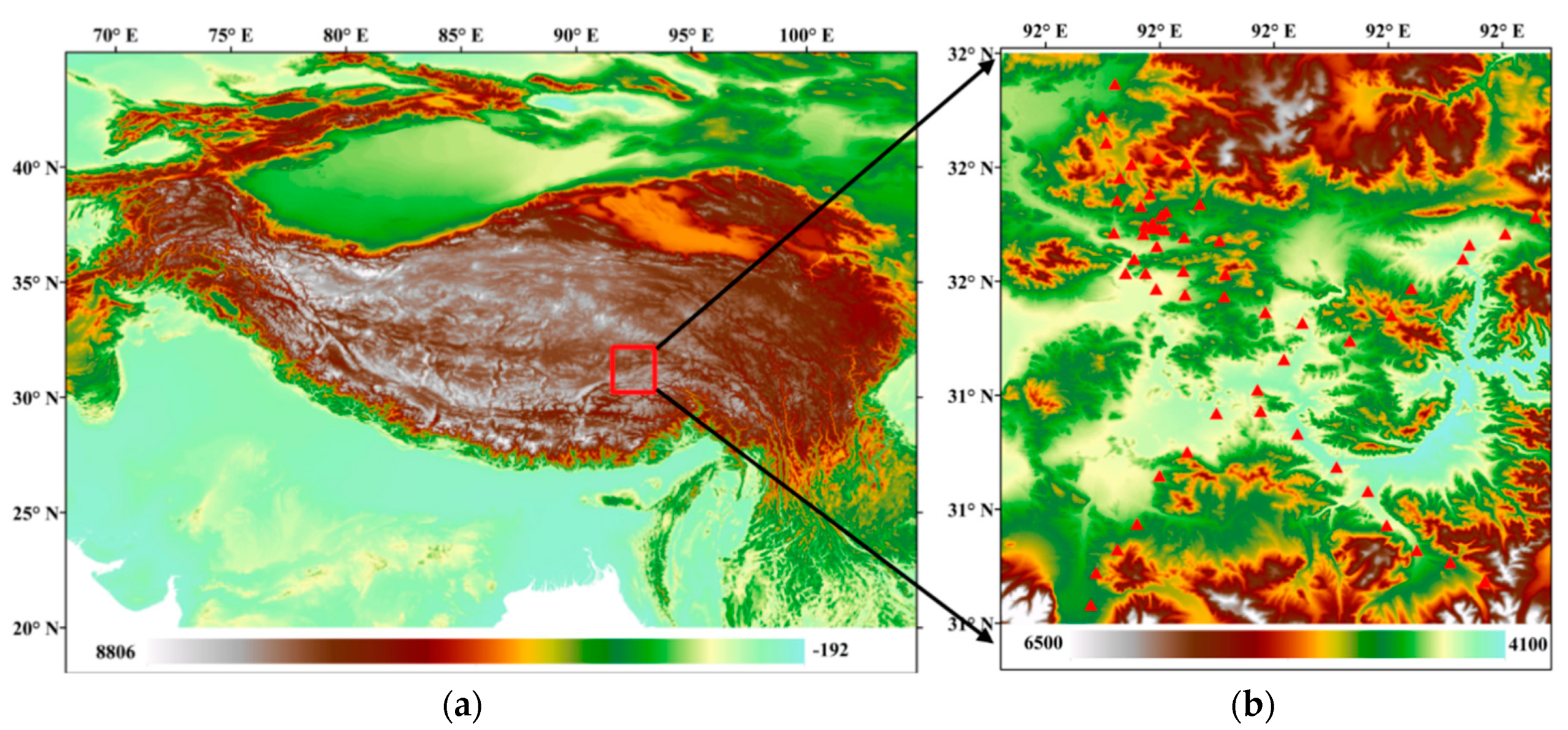
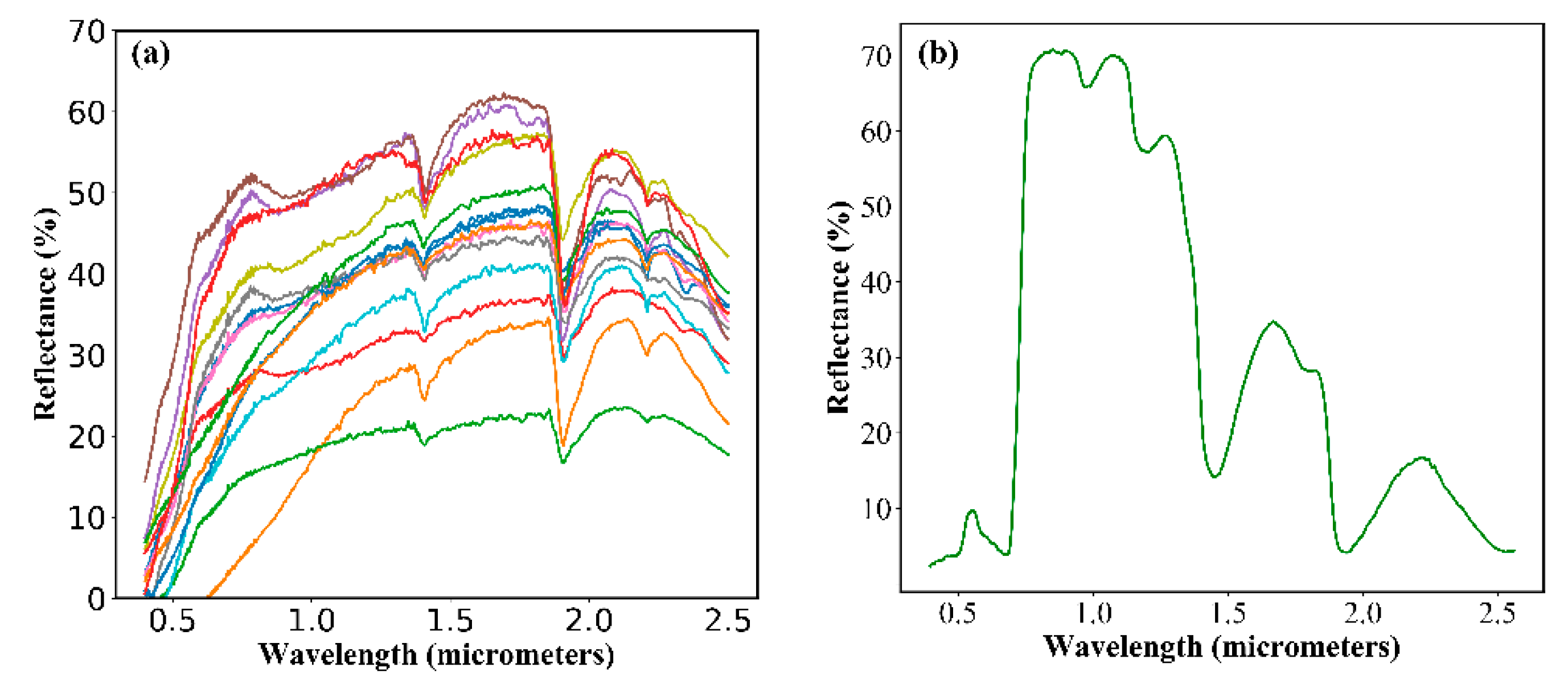


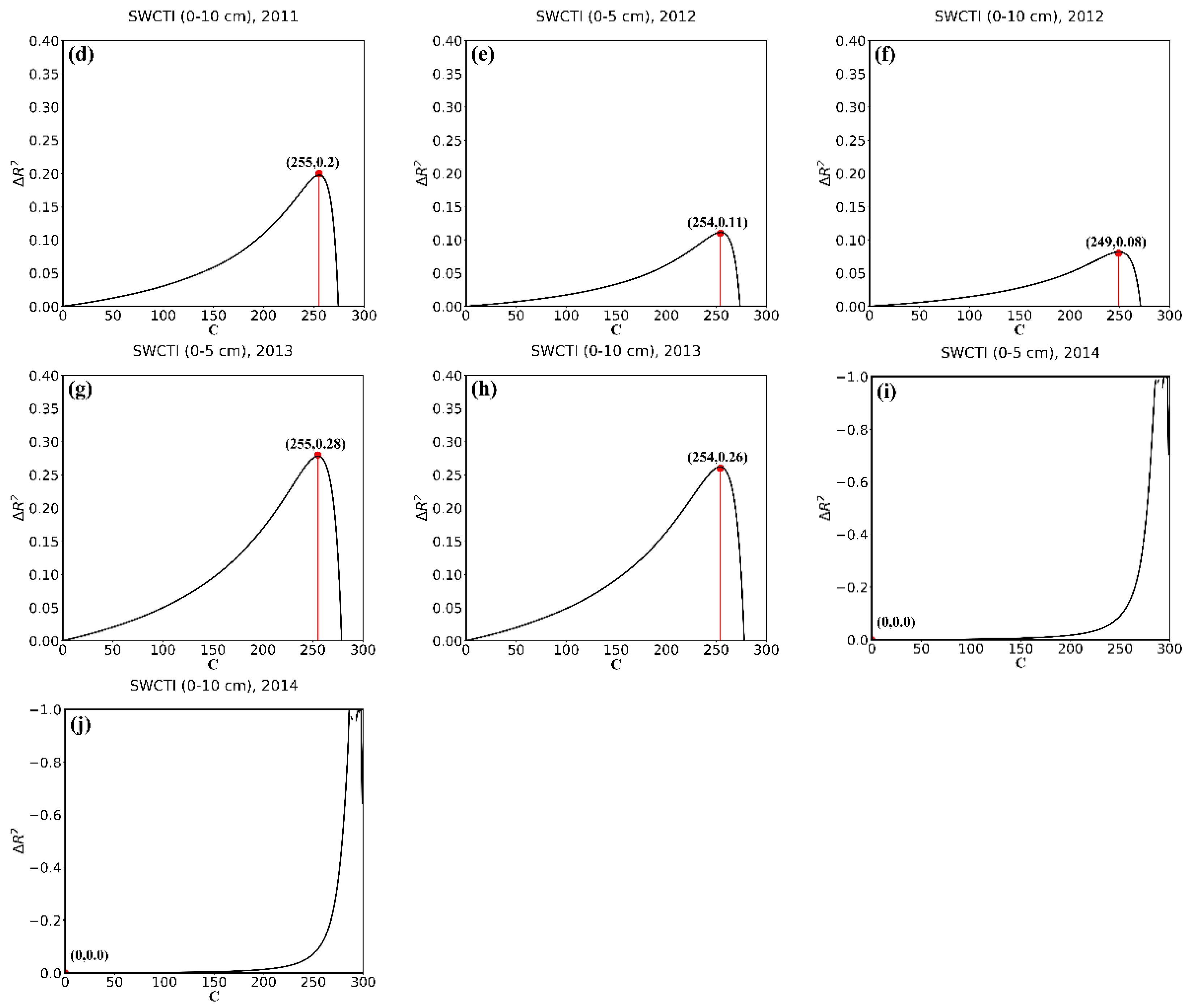
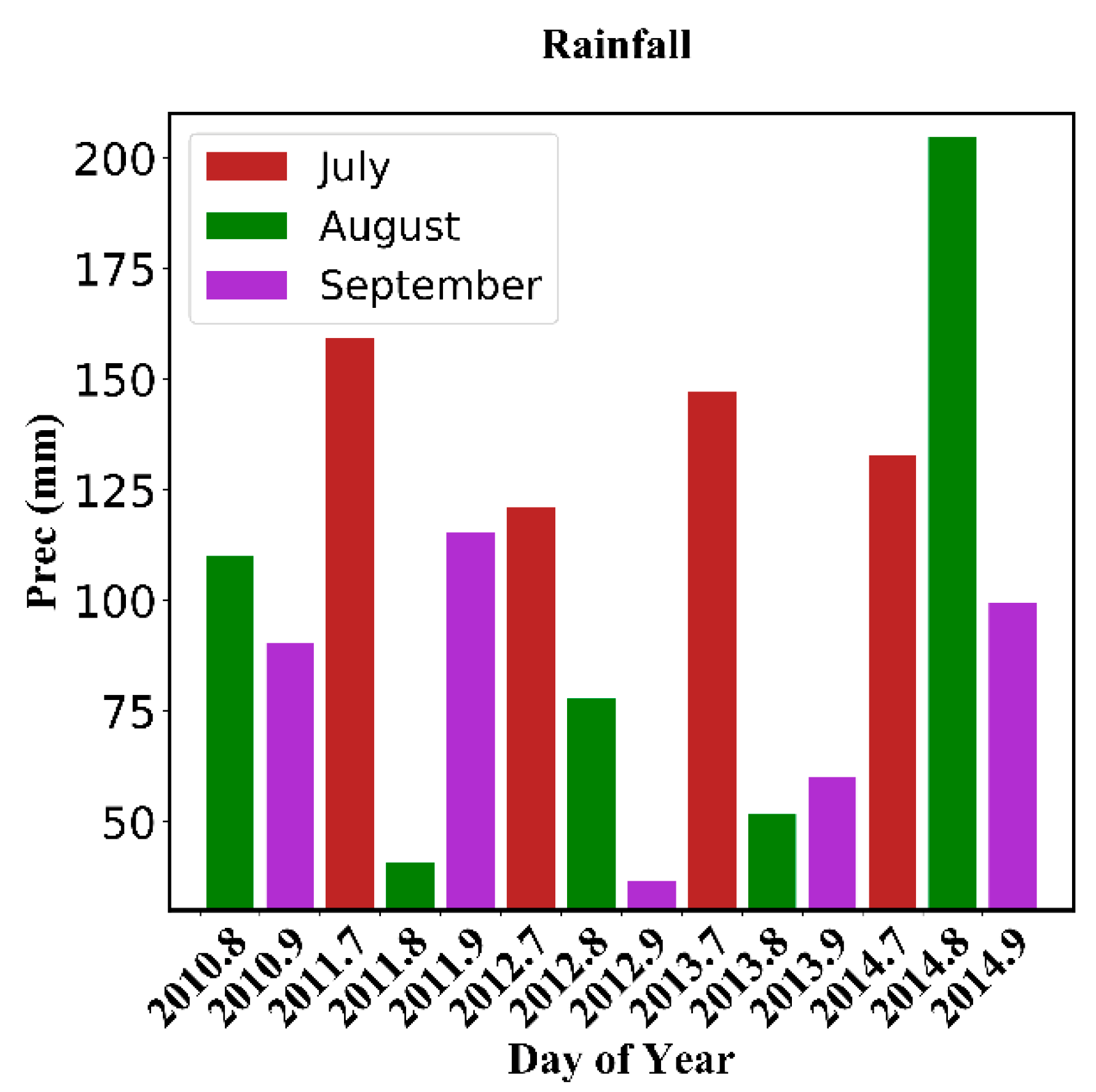
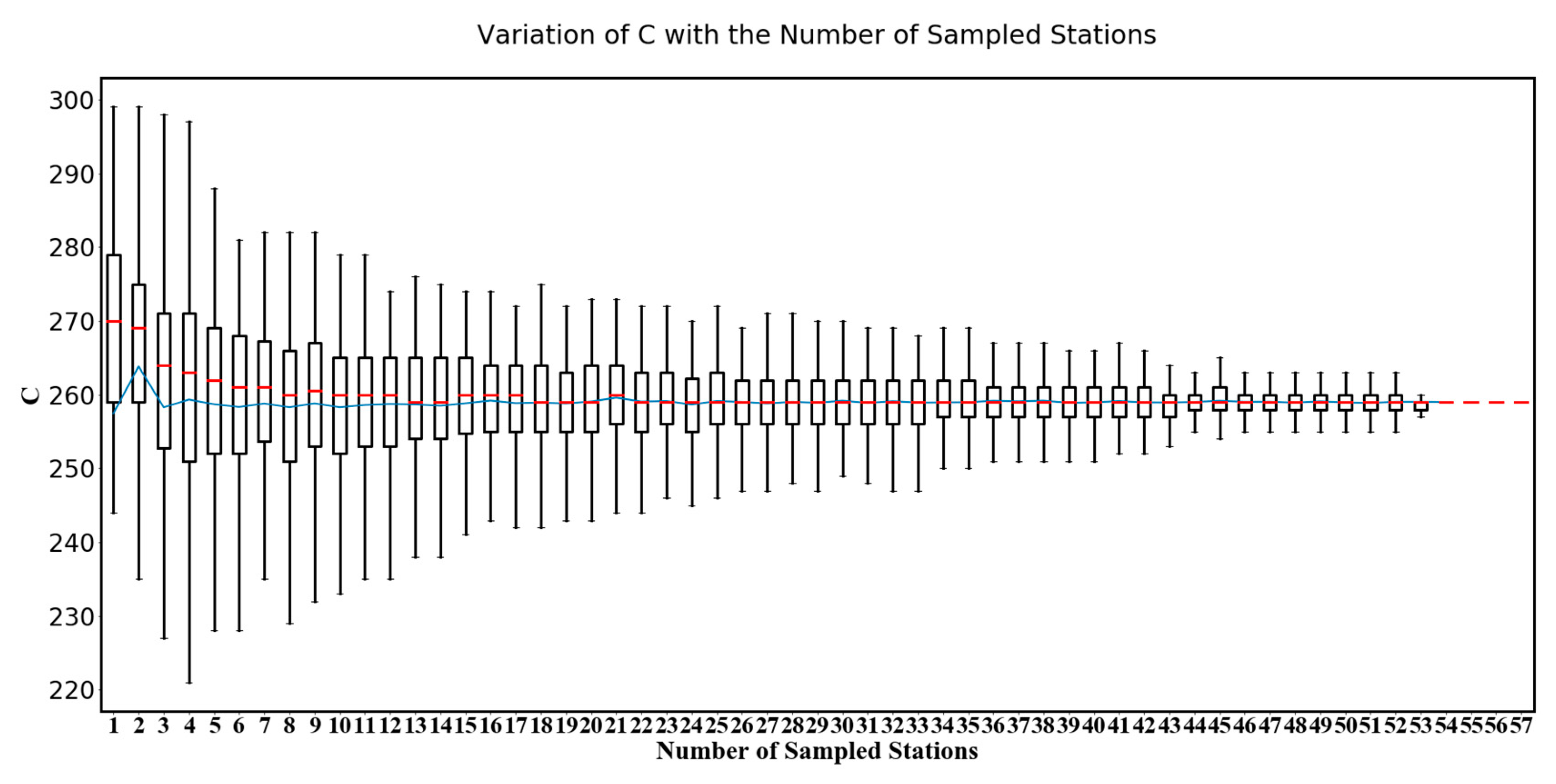
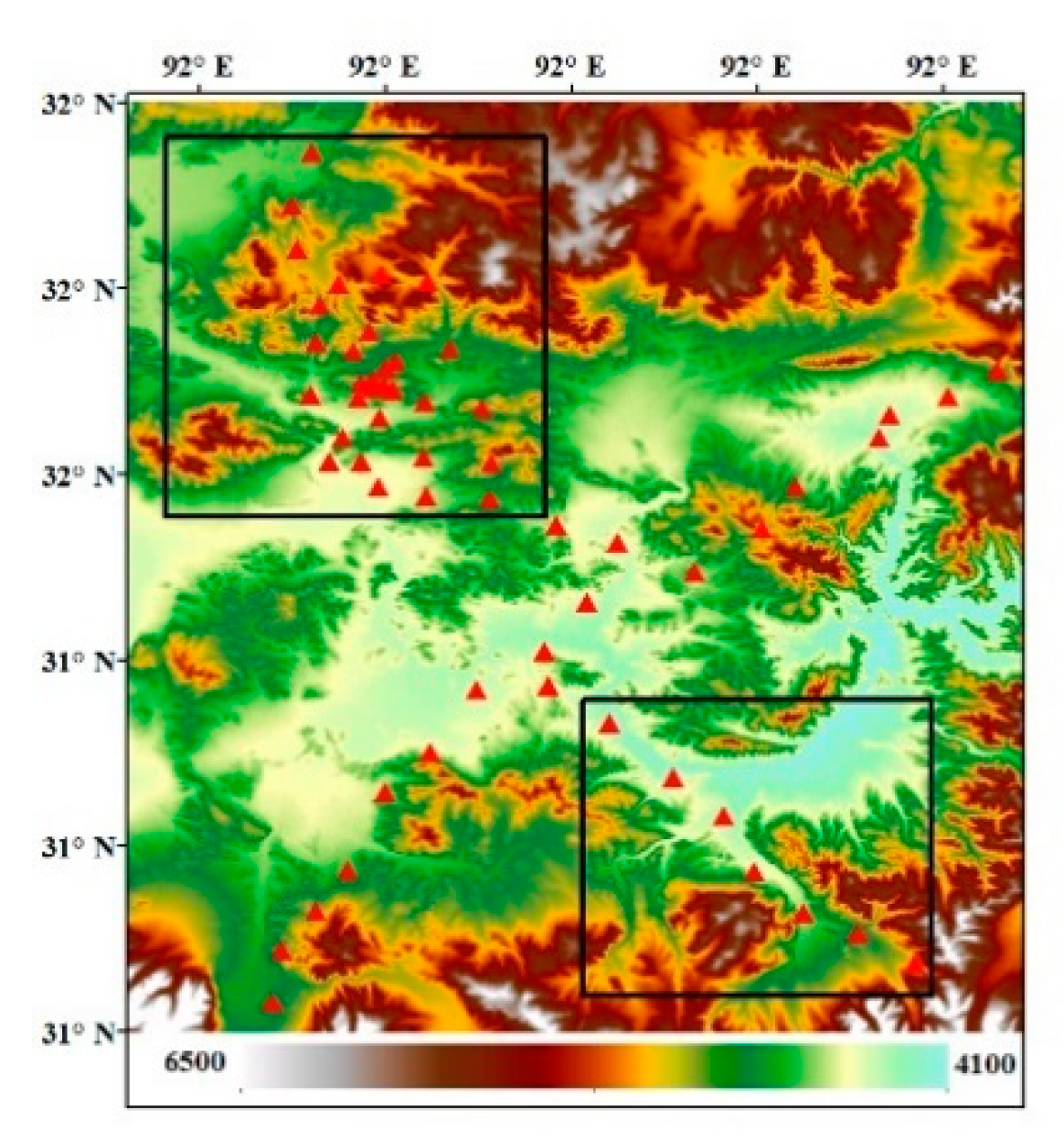
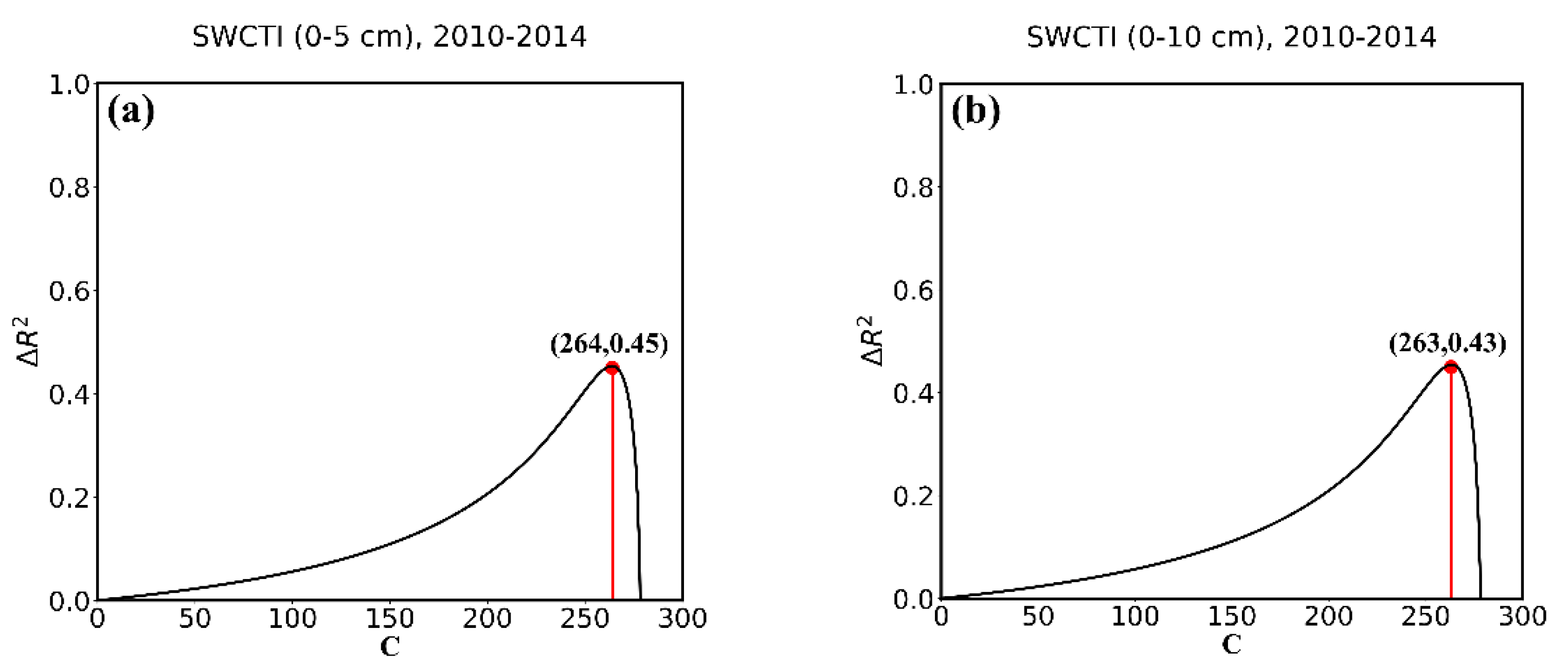
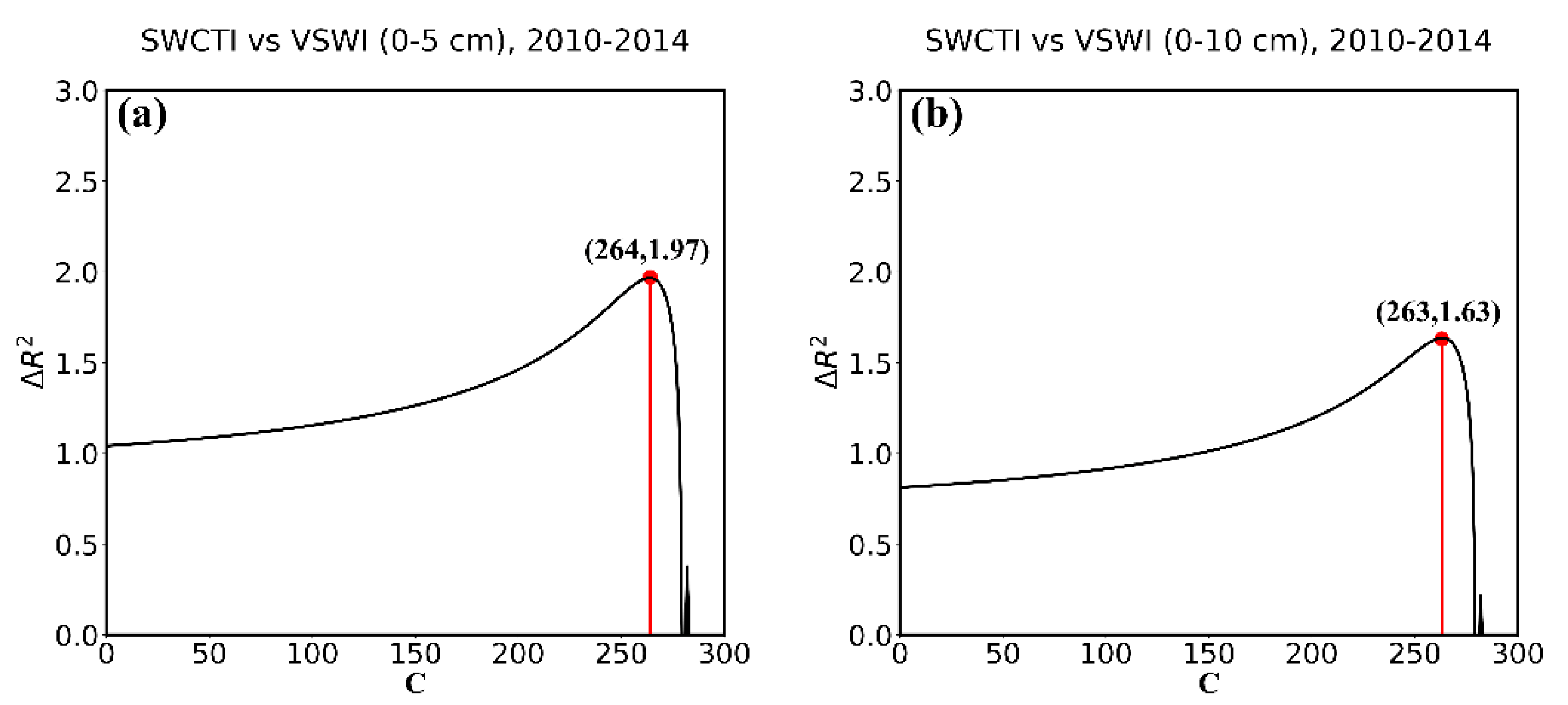
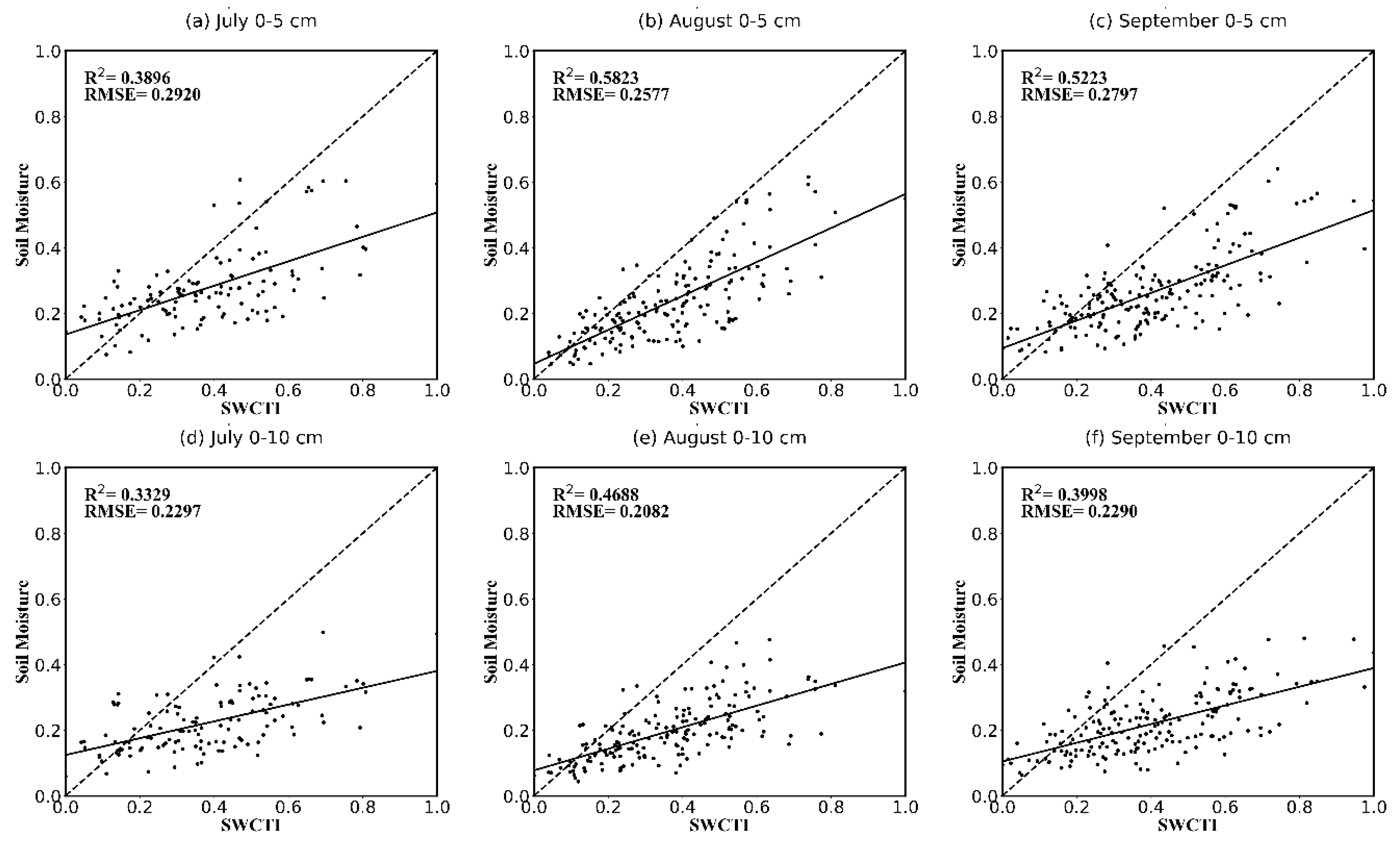

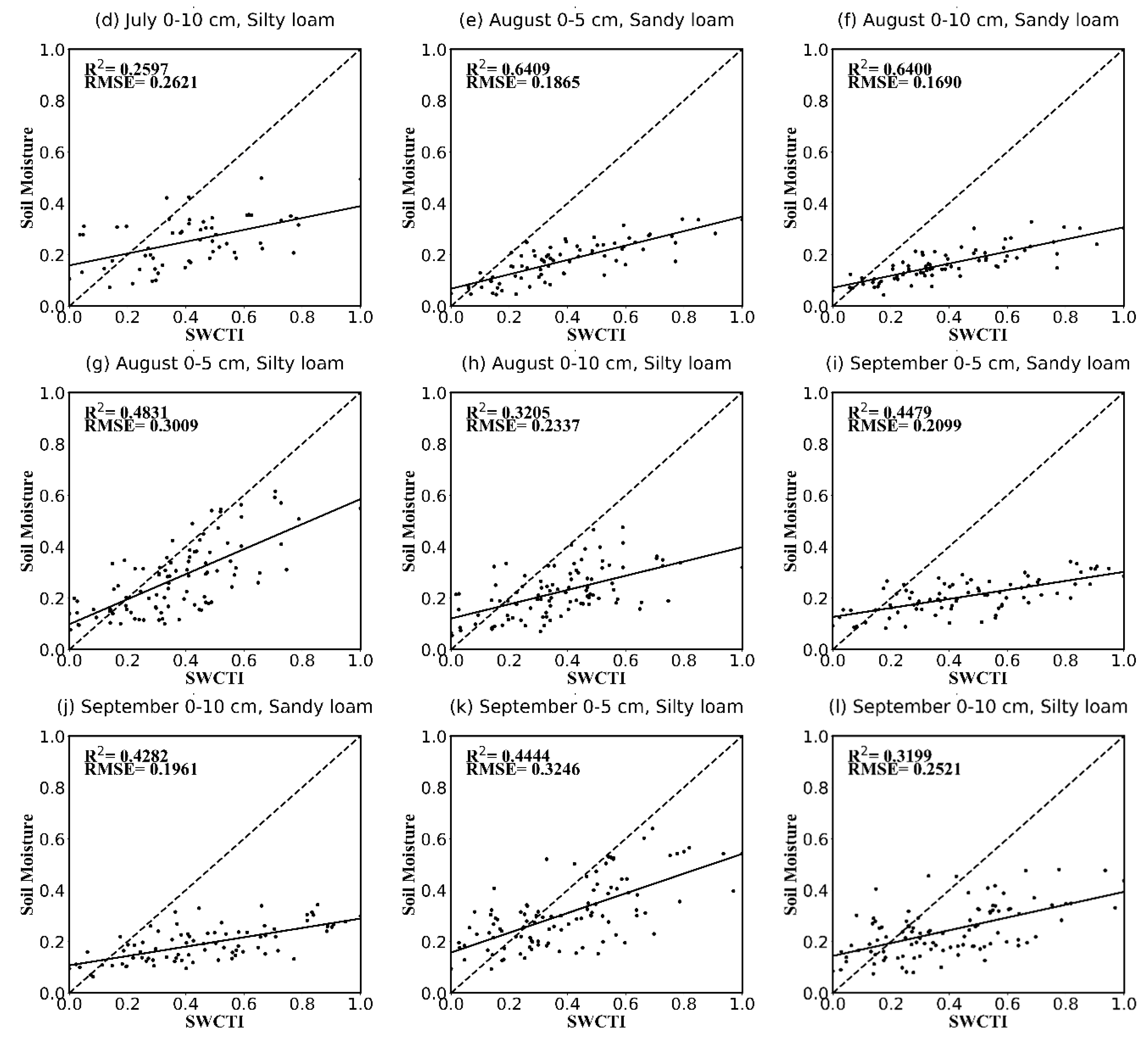
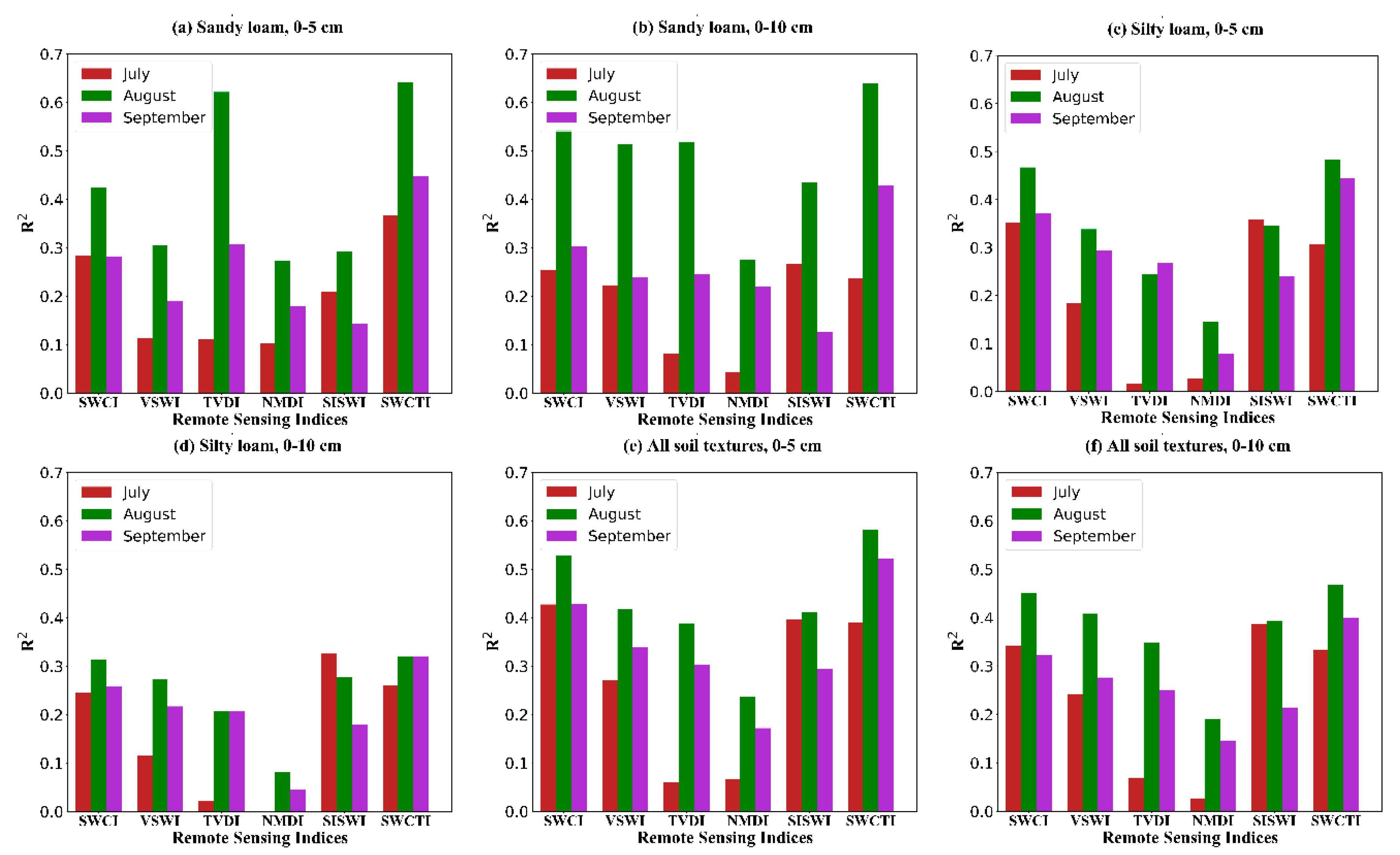
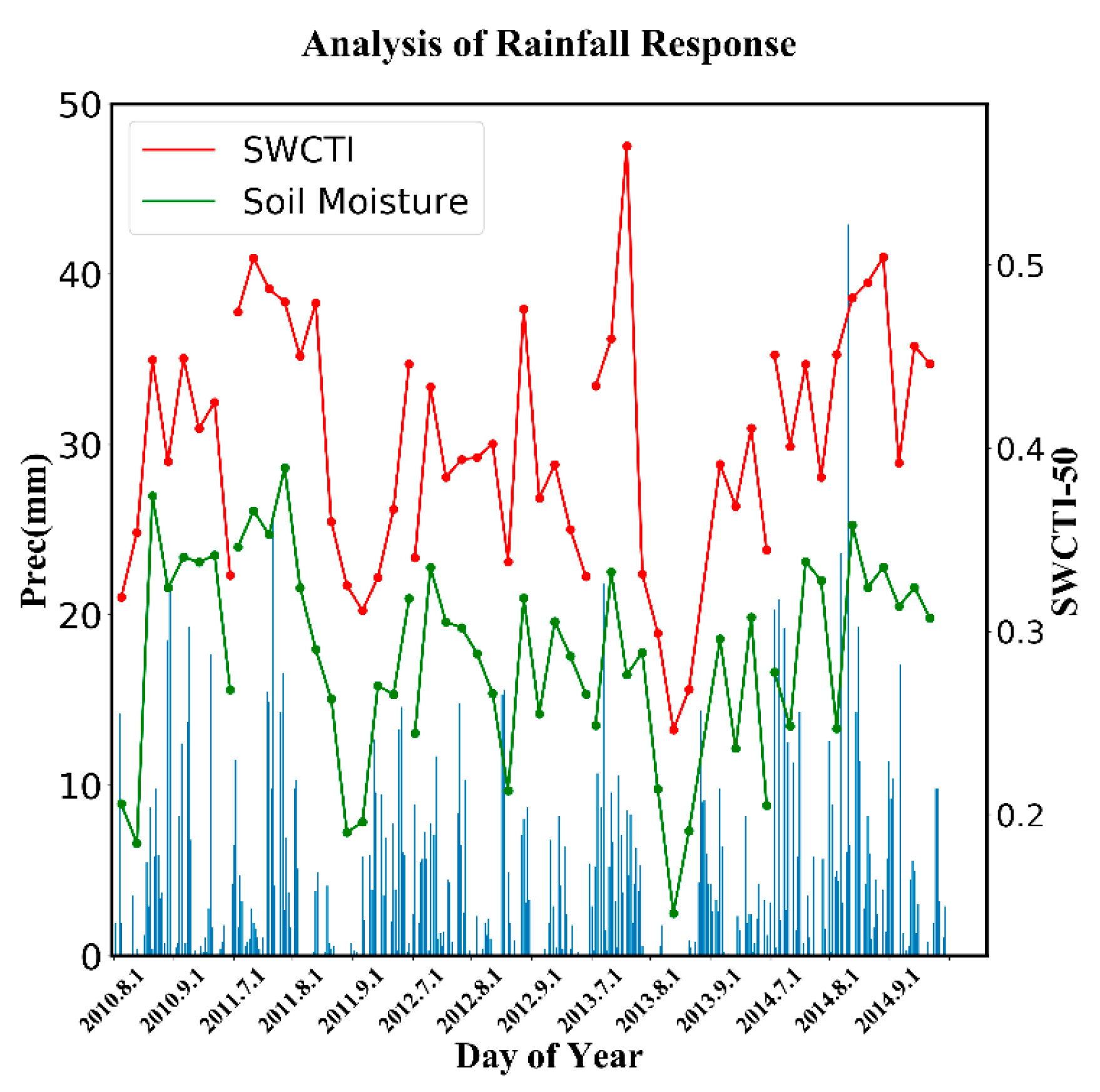
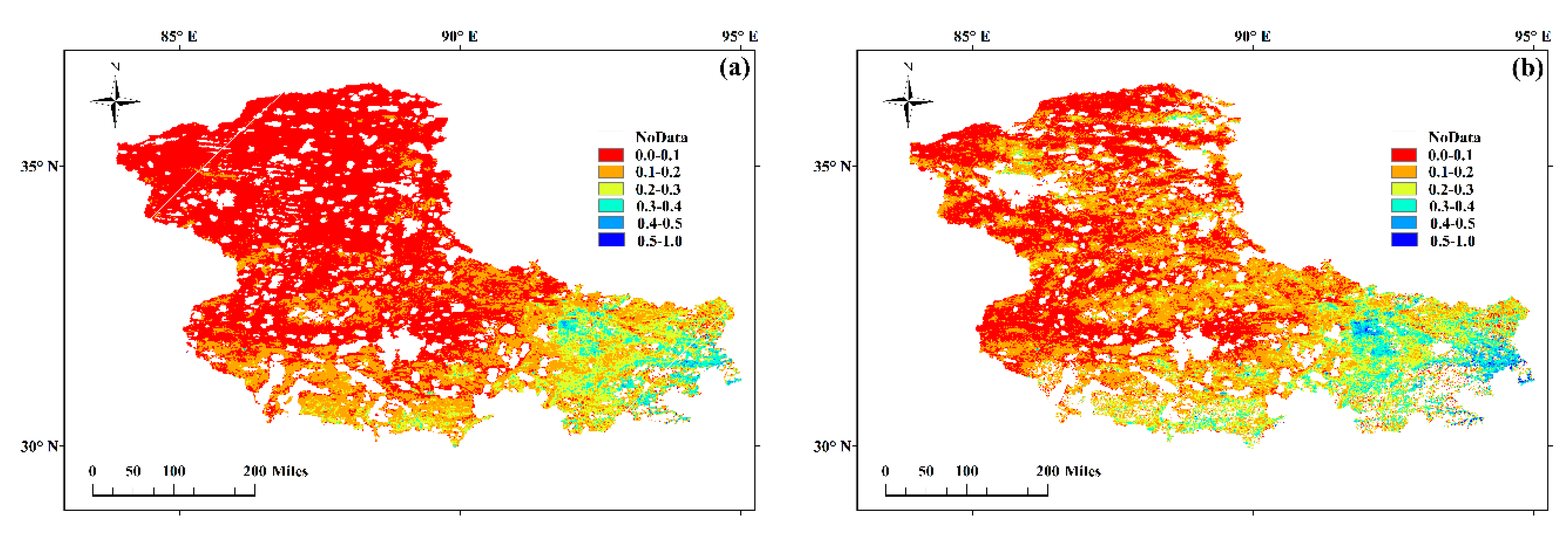
| Products | Bit Number | Parameter Name | Bit Combination | Description |
|---|---|---|---|---|
| MOD09A1 | 0–1 | Cloud state | 00 | Clear (no cloud) |
| 2 | Cloud shadow | 0 | No cloud shadow | |
| 6–7 | Aerosol quantity | 01 | Low aerosol content | |
| 8–9 | Cirrus detected | 00 | No cirrus | |
| 12 | MOD35 snow/ice flag | 0 | No snow/ice | |
| 13 | Pixel is adjacent to cloud | 0 | Pixel is not adjacent to cloud | |
| MOD11A2 | 0–1 | Mandatory QA flags | 00/01 | 00 = LST produced, good quality, not necessary to examine more detailed QA |
| 01 = LST produced, other quality, recommend examination of more detailed |
| Soil Texture | Soil Depth | Time | RMSE | |
|---|---|---|---|---|
| Sandy loam | 0–5 cm | July | 0.2281 | 0.3659 |
| August | 0.1865 | 0.6409 | ||
| September | 0.2099 | 0.4479 | ||
| 0–10 cm | July | 0.1934 | 0.2372 | |
| August | 0.1690 | 0.6400 | ||
| September | 0.1961 | 0.4282 | ||
| Silty loam | 0–5 cm | July | 0.3460 | 0.3074 |
| August | 0.3009 | 0.4831 | ||
| September | 0.3246 | 0.4444 | ||
| 0–10 cm | July | 0.2621 | 0.2597 | |
| August | 0.2337 | 0.3205 | ||
| September | 0.2521 | 0.3199 |
| Sandy Loam | Silty Loam | All Soil Textures | ||||
|---|---|---|---|---|---|---|
| Index | R² (10 cm) | |||||
| July | ||||||
| NDVI | 0.0876 ** | 0.2023 | 0.1778 | 0.1075 ** | 0.2588 | 0.2296 |
| LST | 0.2855 | 0.1095 | 0.0508 *** | 0.0802 ** | 0.0809 | 0.0875 |
| SWCI | 0.2846 | 0.2543 | 0.3512 | 0.2463 | 0.4272 | 0.3416 |
| VSWI | 0.1129 | 0.2223 | 0.1843 | 0.1157 | 0.2704 | 0.2413 |
| TVDI | 0.1114 | 0.0815 ** | 0.0153 *** | 0.0212 *** | 0.0591 | 0.0682 |
| NMDI | 0.1026 ** | 0.0421 *** | 0.0274 *** | 0.0007 *** | 0.0659 | 0.0262 *** |
| SISWI | 0.2085 | 0.2667 | 0.3591 | 0.3255 | 0.3955 | 0.3860 |
| SWCTI | 0.3659 | 0.2372 | 0.3074 | 0.2597 | 0.3896 | 0.3329 |
| August | ||||||
| NDVI | 0.2522 | 0.4657 | 0.3135 | 0.2558 | 0.3889 | 0.3851 |
| LST | 0.6095 | 0.4112 | 0.1970 | 0.1593 | 0.2979 | 0.2496 |
| SWCI | 0.4239 | 0.5444 | 0.4671 | 0.3141 | 0.5282 | 0.4516 |
| VSWI | 0.3041 | 0.5140 | 0.3380 | 0.2734 | 0.4178 | 0.4084 |
| TVDI | 0.6214 | 0.5180 | 0.2441 | 0.2069 | 0.3874 | 0.3486 |
| NMDI | 0.2727 | 0.2759 | 0.1457 | 0.0817 | 0.2366 | 0.1911 |
| SISWI | 0.2926 | 0.4355 | 0.3446 | 0.2778 | 0.4118 | 0.3928 |
| SWCTI | 0.6409 | 0.6400 | 0.4831 | 0.3205 | 0.5823 | 0.4688 |
| September | ||||||
| NDVI | 0.1627 | 0.2146 | 0.2670 | 0.1966 | 0.3116 | 0.2539 |
| LST | 0.2271 | 0.1516 | 0.1273 | 0.0938 | 0.1544 | 0.1254 |
| SWCI | 0.2818 | 0.3023 | 0.3722 | 0.2583 | 0.4291 | 0.3234 |
| VSWI | 0.1891 | 0.2389 | 0.2944 | 0.2167 | 0.3395 | 0.2757 |
| TVDI | 0.3069 | 0.2456 | 0.2689 | 0.2065 | 0.3028 | 0.2508 |
| NMDI | 0.1786 | 0.2204 | 0.0784 | 0.0452 ** | 0.1717 | 0.1450 |
| SISWI | 0.1431 | 0.1258 | 0.2405 | 0.1801 | 0.2936 | 0.2142 |
| SWCTI | 0.4479 | 0.4282 | 0.4444 | 0.3199 | 0.5223 | 0.3988 |
© 2018 by the authors. Licensee MDPI, Basel, Switzerland. This article is an open access article distributed under the terms and conditions of the Creative Commons Attribution (CC BY) license (http://creativecommons.org/licenses/by/4.0/).
Share and Cite
Hong, Z.; Zhang, W.; Yu, C.; Zhang, D.; Li, L.; Meng, L. SWCTI: Surface Water Content Temperature Index for Assessment of Surface Soil Moisture Status. Sensors 2018, 18, 2875. https://doi.org/10.3390/s18092875
Hong Z, Zhang W, Yu C, Zhang D, Li L, Meng L. SWCTI: Surface Water Content Temperature Index for Assessment of Surface Soil Moisture Status. Sensors. 2018; 18(9):2875. https://doi.org/10.3390/s18092875
Chicago/Turabian StyleHong, Zhiming, Wen Zhang, Changhui Yu, Dongying Zhang, Linyi Li, and Lingkui Meng. 2018. "SWCTI: Surface Water Content Temperature Index for Assessment of Surface Soil Moisture Status" Sensors 18, no. 9: 2875. https://doi.org/10.3390/s18092875
APA StyleHong, Z., Zhang, W., Yu, C., Zhang, D., Li, L., & Meng, L. (2018). SWCTI: Surface Water Content Temperature Index for Assessment of Surface Soil Moisture Status. Sensors, 18(9), 2875. https://doi.org/10.3390/s18092875







